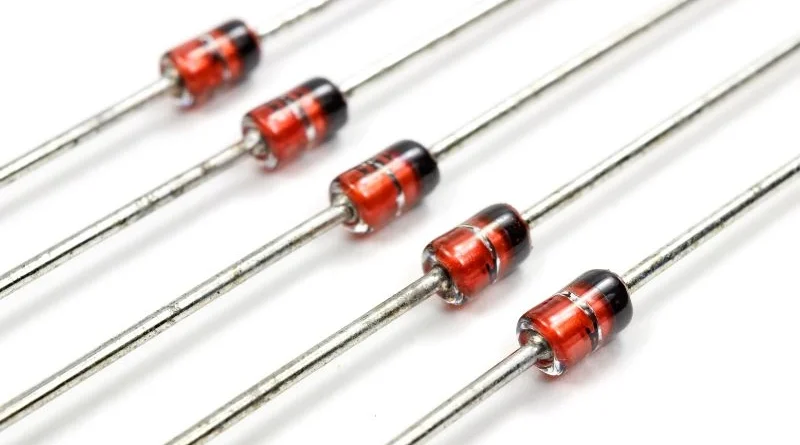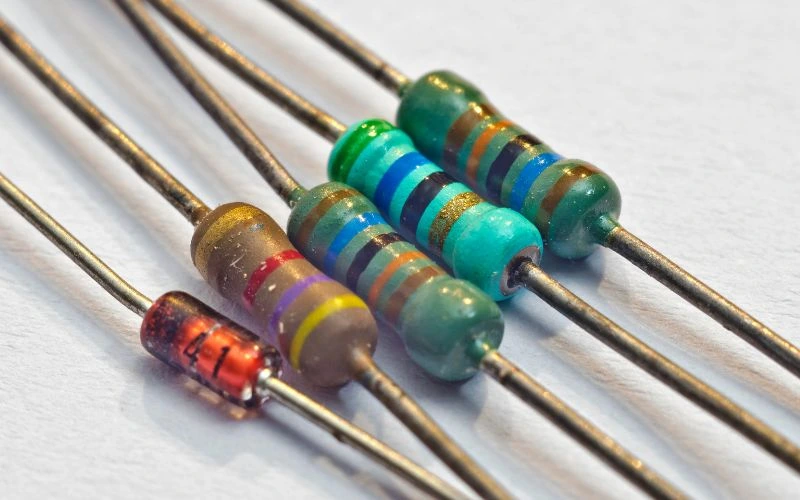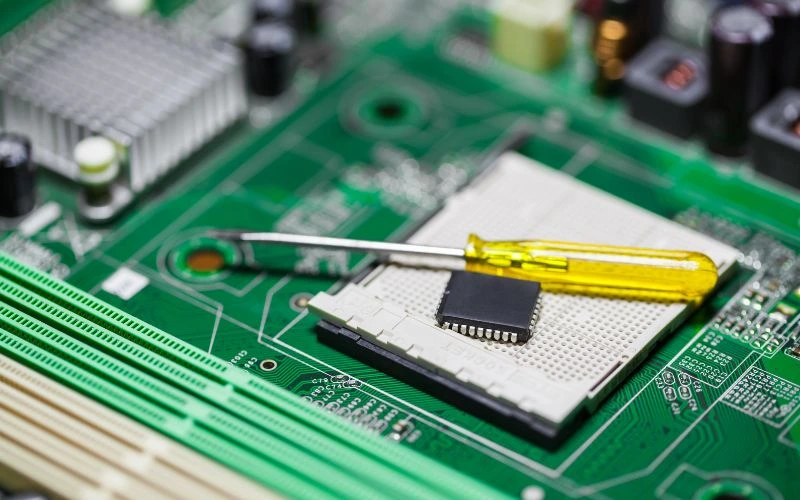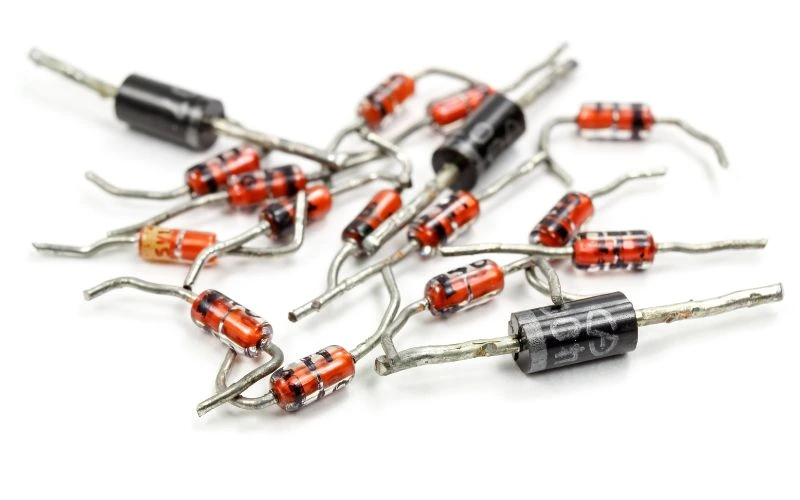
Zener diodes are important electronic components used in many different applications, from voltage regulation to signal clipping. To realize its full potential, it is important to understand the intricacies of Zener diode characteristics. In this article, we will review the key features of Zener diodes, their applications, and practical insights to help you make informed decisions when working with these devices.
Introduction to Zener Diodes

Zener diodes are semiconductor devices with unique electrical properties and are often called voltage reference diodes or voltage regulator diodes. They can maintain a constant voltage drop across their terminals when subjected to a certain reverse voltage.
What is a Zener diode?
A Zener diode is a special semiconductor device that allows current to flow in the opposite direction when a certain voltage, called breakdown voltage (Vz), is applied to its terminals. It is designed to maintain a constant voltage drop across its terminals, making it ideal for voltage regulation and other applications.
How does a Zener diode work?
Zener diodes work on the principle of avalanche breakdown. When a voltage exceeding the Zener voltage (Vz) is applied in the reverse direction, the diode conducts and allows current to pass. This controlled conduction ensures that the voltage across the diode remains relatively stable even when the input voltage fluctuates.
Zener diode characteristics
To effectively use Zener diodes in electronic circuits, it is important to know their properties. Here are the key features to consider:
Breakdown voltage (Vz)
The breakdown voltage, denoted as Vz, is the specific voltage at which the Zener diode starts conducting in the reverse direction. It is the crucial parameter that determines the voltage regulation capability of the diode. Zener diodes are available in various Vz ratings, making them suitable for different voltage regulation applications.
Reverse leakage current (Iz)
Reverse leakage current, denoted as Iz, is the current that flows through the Zener diode when it is reverse biased. Ideally, this current should be minimal. A low Iz ensures that the diode does not produce excessive power and remains efficient at regulating voltage.
Dynamic resistance (Rz)
Dynamic resistance, often referred to as Rz, is the voltage change across the Zener diode divided by the current change in the diode when operating in the breakdown region. Lower dynamic resistance indicates better voltage regulation performance.
Temperature coefficient (TC)
The temperature coefficient TC indicates how sensitive the Zener voltage (Vz) reacts to temperature changes. A lower TC value is desirable because the Zener diode voltage remains more stable over a wide temperature range.
Zener tension in the knee
The Zener knee voltage is the voltage at which the Zener diode changes from the off to the on state. It is slightly higher than the Zener voltage rating (Vz) and is a critical parameter when designing circuits that require accurate voltage references.
Applications of Zener Diodes

Due to their unique properties, Zener diodes are used in various electronic circuits and systems. Some common applications are:
Voltage regulation
Zener diodes are often used for voltage regulation in power supplies. By connecting a reverse-biased Zener diode to the output, the voltage can be stabilized at the Zener voltage, ensuring a constant output voltage regardless of input fluctuations.
Signal clipping
In signal processing applications, Zener diodes can be used to limit the amplitude of an input signal. This is useful to avoid signal distortion and protect downstream components.
Voltage change
Zener diodes can change the voltage level of a signal or a bias point in a circuit. This is useful in applications such as transistor biasing and level shifting.
Voltage Reference
Zener diodes are stable voltage references for precise analog circuits, ensuring consistent and accurate voltage levels in sensitive applications such as instrumentation and measurement.
Overvoltage protection
Zener diodes effectively protect circuits against voltage spikes and surges. Placing a Zener diode over sensitive components can divert excessive voltages away from them, thus preventing damage.
Factors affecting Zener diode characteristics
The performance of Zener diodes can be influenced by several factors:
Manufacturing Tolerances
Manufacturing variations may result in small differences in Zener voltage and other characteristics. It is important to select Zener diodes with tolerances that meet your specific needs.
temperature
Temperature plays an important role in the behavior of the Zener diode. Zener voltage can vary as temperature increases, affecting the accuracy of voltage regulation. Consider the temperature range of your application.
Current
The operating current through a zener diode can affect its voltage regulation ability. Operating the diode at a current significantly different from its rated current may affect its performance.
aging
Over time, Zener diodes can age and change their properties. This aging effect must be taken into consideration for long-term applications that require accurate voltage references.
Choosing the Right Zener Diode

Choosing the appropriate Zener diode for your application is crucial for reliable performance. Consider the following factors:
Voltage value
For voltage regulation applications, choose a Zener diode with a breakdown voltage (Vz) close to the desired output voltage.
nominal capacity
Make sure the Zener diode can handle the power dissipation in your circuit. Exceeding the diode's rated power may result in overheating and failure.
Package Type
Choose a package type that suits your circuit layout and mounting needs. Common housing types include through-hole and surface-mount variants.
tolerance
Zener diodes are available with different tolerances. If accurate voltage regulation is critical, opt for diodes with tighter tolerances.
Temperature range
Consider the operating temperature range of your application and choose a Zener diode with a temperature coefficient (TC) that meets your needs.
Conclusion
Zener diodes are versatile components essential for electronic circuit design. Understanding its properties and applications is important for both engineers and hobbyists. By considering factors such as breakdown voltage, reverse leakage current, and temperature coefficients and selecting the right Zener diode for your specific needs, you can utilize the full potential of these devices in your electronics projects and applications.
Common questions
What is the purpose of a Zener diode?
Zener diodes are mainly used for voltage regulation and as a reference in electronic circuits. They maintain a stable output voltage while allowing controlled reverse current flow when the input voltage exceeds its breakdown voltage.
How does a Zener diode maintain a constant voltage across its terminals?
A Zener diode maintains a constant voltage across its terminals operating in the breakdown region when a certain reverse voltage is applied. The diode has an almost constant voltage drop in this range, thus ensuring a stable output voltage.
What are some common uses of Zener diodes?
Zener diodes are commonly used for voltage regulation, signal limiting, voltage shifting, voltage reference circuits, and surge protection. They find applications in power supplies, signal processing, biasing, instrumentation, and surge protection.

